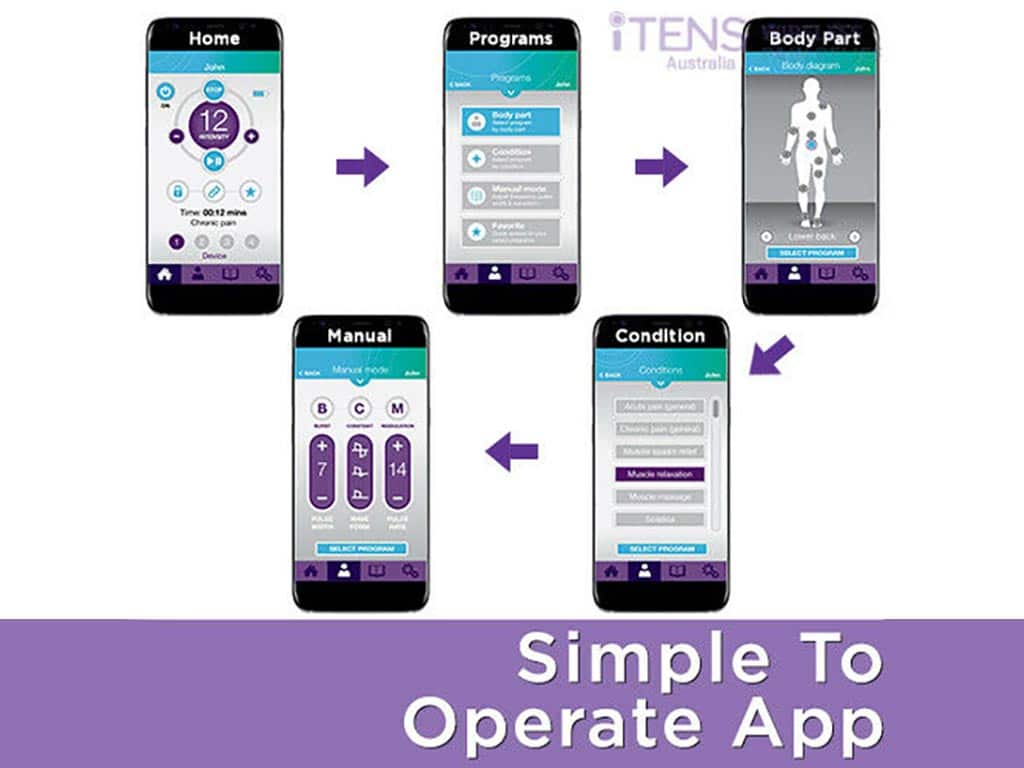
Medical professionals utilise Transcutaneous Electrical Nerve Stimulation (TENS) for decades to help patients have a natural method of pain relief. The TENS unit for home use enables accessible treatment. Device operation involves putting the electrode pads, adjusting the intensity settings, and activating the device. The machine has many advantages, such as portability, non-invasive, drug-free, and compact. Nevertheless, safety guidelines are essential to avoid any adverse effects.
Chronic and acute pain can have a significant impact on the quality of life. Pain or discomfort often comes from muscle contractions, muscle spasms, joint pain, or nerve pain. Fortunately, electrical stimulation is a revolutionary method for pain management without the need for medication or expensive therapy sessions. These devices are available for home use, making physical therapy more accessible than ever before. This article will present how to operate the TENS unit, its advantages, and safety guidelines.
How to Operate a TENS Unit for Home Use
Operating a TENS unit for home use is relatively simple. The device has user-friendly features that are beneficial in providing pain relief even in the comfort of the home. Since it is good for independent use, it is vital to begin by recognising if the device is suitable for the specific condition. Then, read the user manual to understand the features and safety precautions.
In beginning the treatment process, make sure the skin is free from any lotion, oils, or dirt. Accordingly, position electrodes on the target area. Ensure to follow the correct electrode placement, spacing, and orientation. Connect the wires of the electrodes in the device or connect it via Bluetooth for wireless TENS.
Switch on the machine and use the control buttons or the app to adjust the settings according to specific needs. Typically, users can modify the intensity, frequency, and duration of the therapy. Some models also offer pre-set modes for a more convenient treatment. It is important to start with the lowest intensity and gradually increase it to the comfort level.
Treatable Conditions
The TENS is a pain relief therapy for the following types of pain:
- Chronic pain – this is a long-lasting pain that persists for more than three months. TENS therapy can treat conditions like neck pain, low-back pain, muscle pain, arthritis pain, fibromyalgia, and headaches.
- Acute pain conditions – aches that are sudden and temporary. This includes sports injuries, menstrual pain, labour pain, and postoperative issues.
- Nerve-related aches – these are conditions like sciatica, diabetic neuropathy, and neuralgia.
- Musculoskeletal pain – these are aches originating from the muscles, bones, knee joint ailment, ligaments, or tendons. It can also include tension headaches, muscle spasms, and osteoarthritis.

Advantages of a TENS Unit for Home Use
TENS units for home use offer several advantages to managing aches. This medical device provides natural pain relief, making it an attractive option for people. One of the significant benefits is its convenience. People can use the machine whenever the pain starts. This eliminates the need to travel to a health professional, physical therapist or pain management specialist.
Moreover, TENS therapy is safe due to its non-invasiveness and drug-free approach. It uses electrical impulses to provide ease without causing harm or discomfort. Also, TENS allows for targeted pain management. The electrodes can be placed directly or near the source of aches, providing precise relief. TENS devices offer various types and settings to suit specific needs. There are wired and wireless, adjustable features, and pre-set programs.
Additionally, TENS can be a cost-effective and accessible pain management. While there may be an initial investment in a TENS device, it can provide long-term pain relief. It is cost-effective since it lessens the recurring expense of medication or frequent visits to healthcare professionals. Furthermore, it allows users to have a sense of control and self-reliance in mitigating ailment.
Pre-programmed Modes
There are different pre-programmed treatment modes that a TENS device offers. First is the continuous mode. This method provides a constant intensity level. It ensures a steady level of stimulation throughout the treatment session, allowing for a consistent management of pain. This is a common mode for muscle soreness or joint discomfort.
The second is the burst mode. This delivers a series of rapid pulses of electrical stimulation followed by pauses. Such a burst method stimulates the production of endorphins, the natural painkillers of the body. Another is the massage mode. This gives rhythmic stimulation that mimics a soothing sensation.

Safety Guidelines for TENS Unit for Home Use
When it comes to using a TENS unit for home use, it is important to follow safety guidelines to ensure safe and effective use. Before using a TENS device at home, it is advisable to consult a medical practitioner. Professionals can tell if the therapy is suitable for such conditions. Since there is no specialised worker at home, it is important to read the user manual.
Consequently, know the correct pad placement. It is vital to clean and dry the skin area. This is to ensure a good adhesion of electrodes to the skin. Also, avoid placing the pads over sensitive areas and bony regions. This includes broken skin, eyes, mouth, chest, throat, and bony regions. Accordingly, start the session at the lowest levels and moderately increase it to the comfort level.
During the therapy, people may experience tingling or muscle contractions. It is important to differentiate between these sensations and actual aches. The duration of the session must be 15 to 30 minutes. For longer sessions, a 20-minute break is necessary to avoid any contractions. Additionally, do not use the device while driving, sleeping or operating machinery.
When to Avoid
There are certain circumstances when it is important to avoid using a TENS device. People who have a pacemaker or any other implanted electronic device should avoid using a TENS equipment as it may interfere with these devices. Additionally, those who have open wounds or skin infections in the area where the electrodes would be placed should refrain from using a TENS tool. The electrical stimulation may worsen the condition.
Pregnant women should also avoid using TENS units unless advised by a healthcare professional. People with heart ailments and epilepsy should avoid using the device. The electrical current could potentially trigger seizures.
Conclusion
The TENS unit for home use is a portable device that provides many benefits for people. It is a beneficial tool, especially for individuals who do not want to frequently visit clinical settings or seek medical professionals. The device is easy to operate, adding to its convenience. People can simply place the electrode pads, adjust the setting, activate the unit and relax. The therapy is also less invasive and does not require any over-the-counter medications.
Overall, the TENS device can treat a variety of conditions, including joint inflammation and nerve-related pain. This is due to the versatility of the tool, wherein people can modify the treatment settings or choose a pre-set mode. Nevertheless, it is vital to recognise the safety guidelines to ensure the effective utilisation of the therapy. Lastly, it is crucial to know who needs to avoid the therapy to eliminate any potential risks.




















